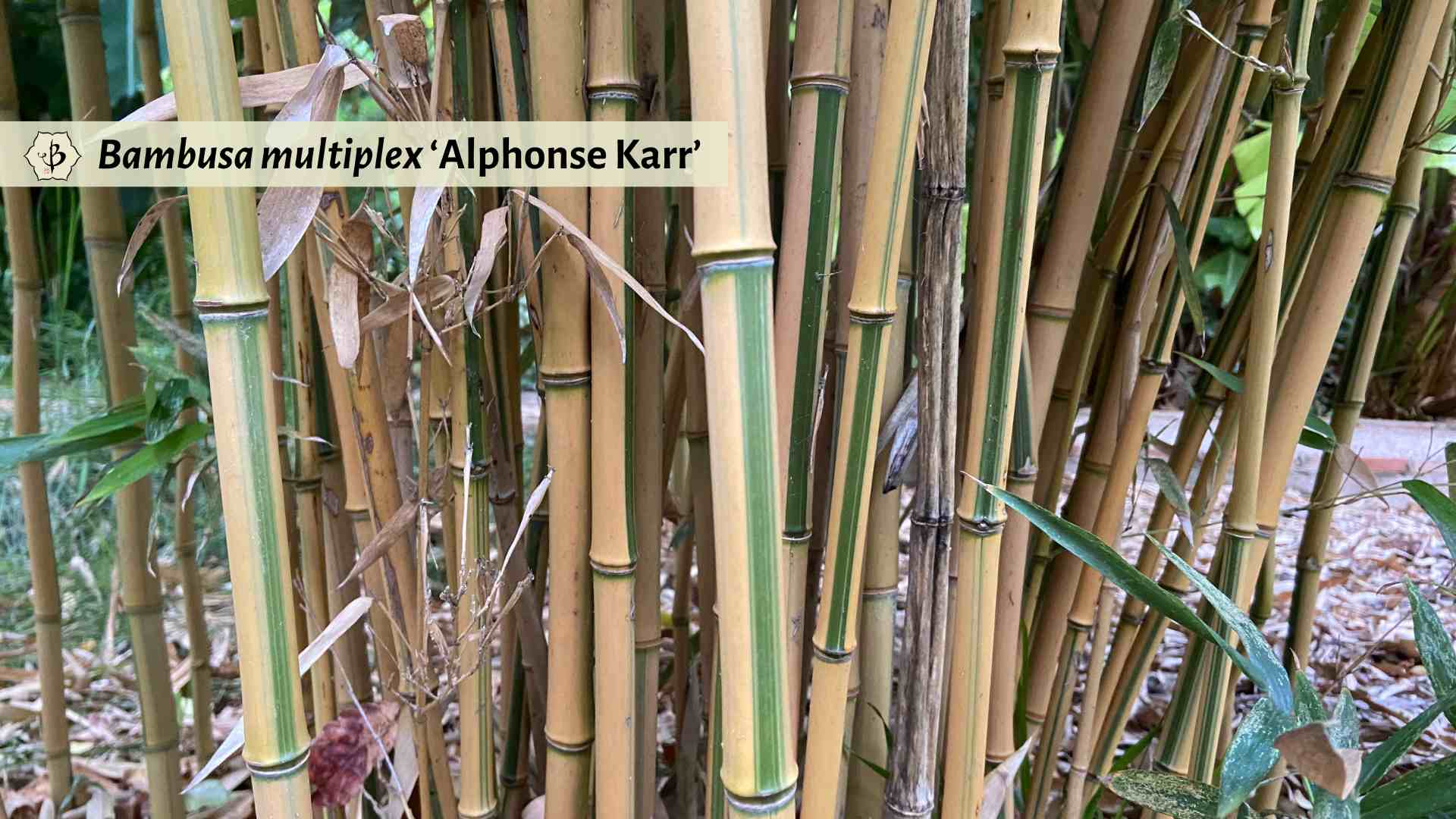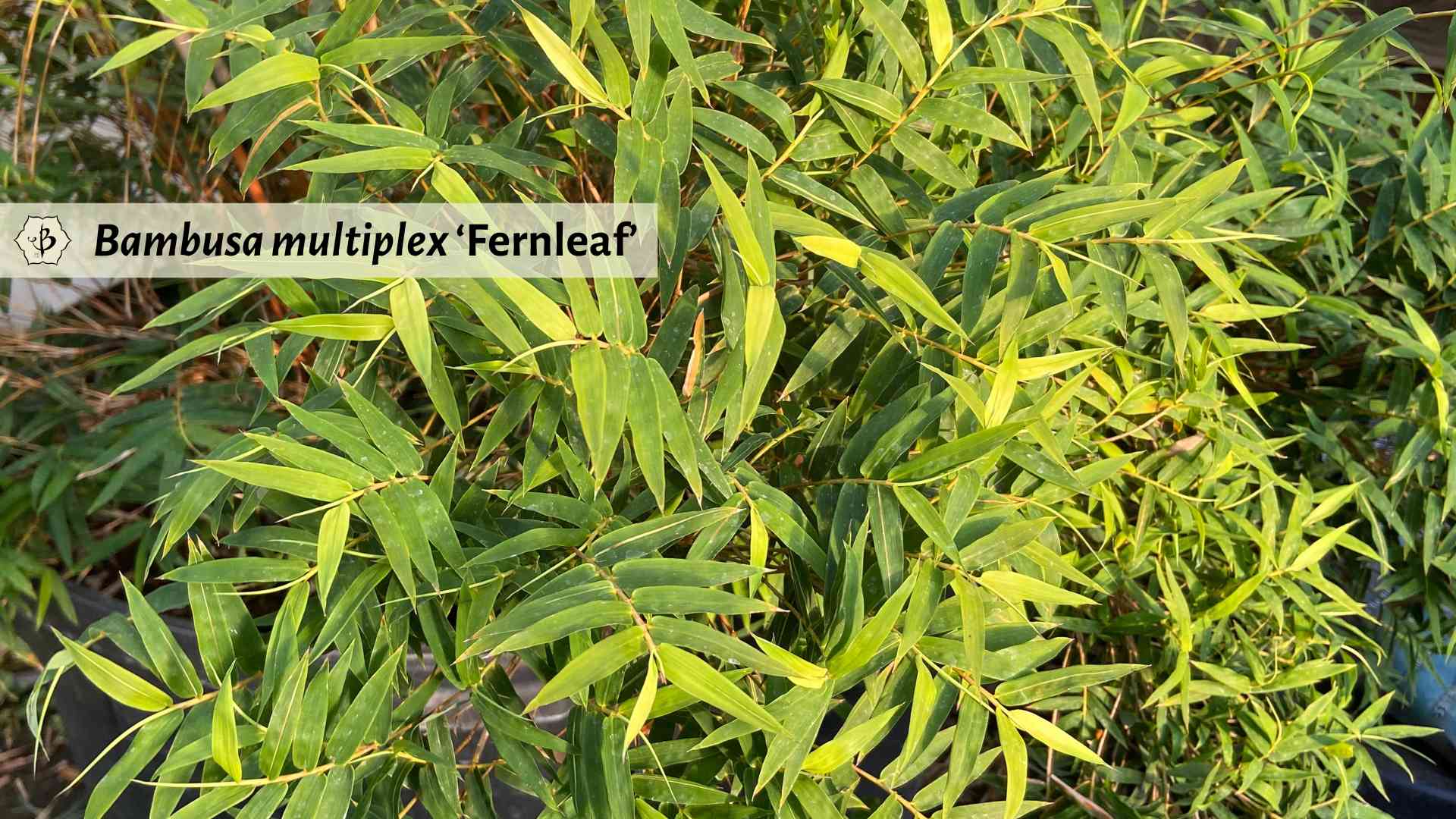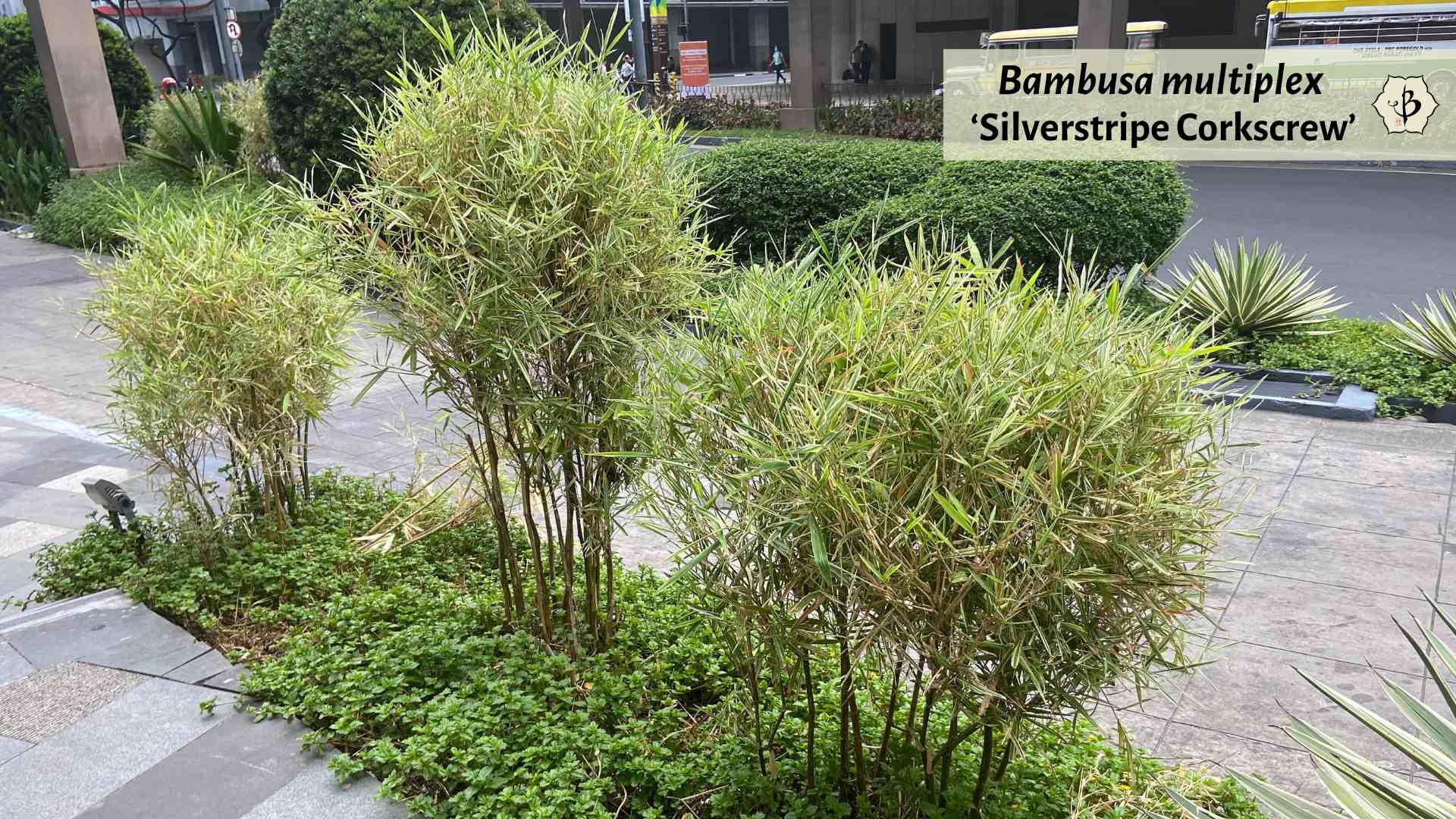The bamboo subfamily is vast and varied, as you’ll quickly realize by scrolling around this website. There are roughly 100 genera and well over 1,000 distinct species. But if you include all the subspecies and cultivars, the total number of bamboo varieties adds up to more than 1,600. That’s because many species, such as Phyllostachys nigra and Phyllostachys edulis` have several different subspecies. A perfect example of this is the species Bambusa multiplex, which, as you might infer from the name, has multiple subspecies.
Bambusa multiplex, sometimes called Hedge Bamboo, is a medium-sized clumping bamboo native to China and southern Asia. Thin culms form tight clumps with dense foliage, making the plants very suitable as hedges or privacy barriers. As a subtropical bamboo species, B. multiplex grows best in warmer climates but can tolerate some frost. Numerous subspecies of multiplex are popular as ornamentals, such as Golden Goddess and Alphonse Karr.
NOTE: This article first appeared in February 2024, most recently updated in September 2024.

Many varieties of Bambusa multiplex
It’s not always clear where and why the lines of speciation are drawn, unless you’re a taxonomist with a bamboo flower and a magnifying glass. In fact, the differences between the subspecies of B. multiplex seem more striking than the traits that differentiate many species. But despite this diversity, taxonomists agree that these variants all belong to the same species.
Bambusa multiplex, or Hedge bamboo: Ideally suited for privacy screens, as the name would suggest with 10-20 foot upright poles. Tightly clustered culms don’t usually get more than a half-inch in diameter.
‘Golden Goddess’ is a very popular ornamental for its manageable size and greater hardiness. They only grow about 10 feet tall, with half-inch culms, cold hardy to 15-20º F. Not to be confused with Phyllostachys aurea, also called Golden Bamboo.

Another subspecies, ‘Alphonse Karr’, is among the most highly sought after of all ornamental bamboos. Distinctive green stripes on bright yellow culms give this variety a stunning appearance (see image below), rather more impressive than its close cousins. For best appearance, keep the lower portions of the plant well-pruned and accentuate the eye-catching stripes. Healthy plants can get 20-30 feet tall, with 1.5-2 inch canes. Tolerates temperates as low as 15-20º F.

Probably the most unusual member of the species is ‘Fernleaf‘ bamboo, also called Bambusa multiplex ‘Elegans’. Small leaves are arranged like the pinnate leaflets of a fern, hence the nickname. This low-growing bamboo looks more like a shrub, with thin, whispy culms that rarely grow more than 8 or 10 feet tall. More cold-hardy than most Bambusa, they can survive temperatures in the low teens (Fahrenheit). They also do well in pots.

Bambusa multiplex ‘Riviereorum’ has a similar appearance to ‘Fernleaf’ with fine leaves, but grows somewhat larger with more upright culms.
Bambusa multiplex ‘Green Giant’ is a very rare mutation of ‘Alphonse Karr’ with solid green stems and a much much greater stature, capable of growing 20-30 feet high. Like Alphonse, the poles grow a bit more than 1 inch thick and the leaves are delicately attractive.

Onward with bamboo
This article is part of an ongoing series of blog posts describing many, many species and genera of bamboo. To learn more, take a look at some of these in-depth descriptions.
- Bambusa oldhamii
- Chimonobambusa quadrangularis
- Dendrocalamus strictus
- Fargesia
- Himalayacalamus
- Indocalamus
- Phyllostachys vivax
- Semarundinaria
FEATURE IMAGE: Young specimen of Bambusa multiplex ‘Alfonse Karr’ with distinctive striping. (Photo by Fred Hornaday)

























